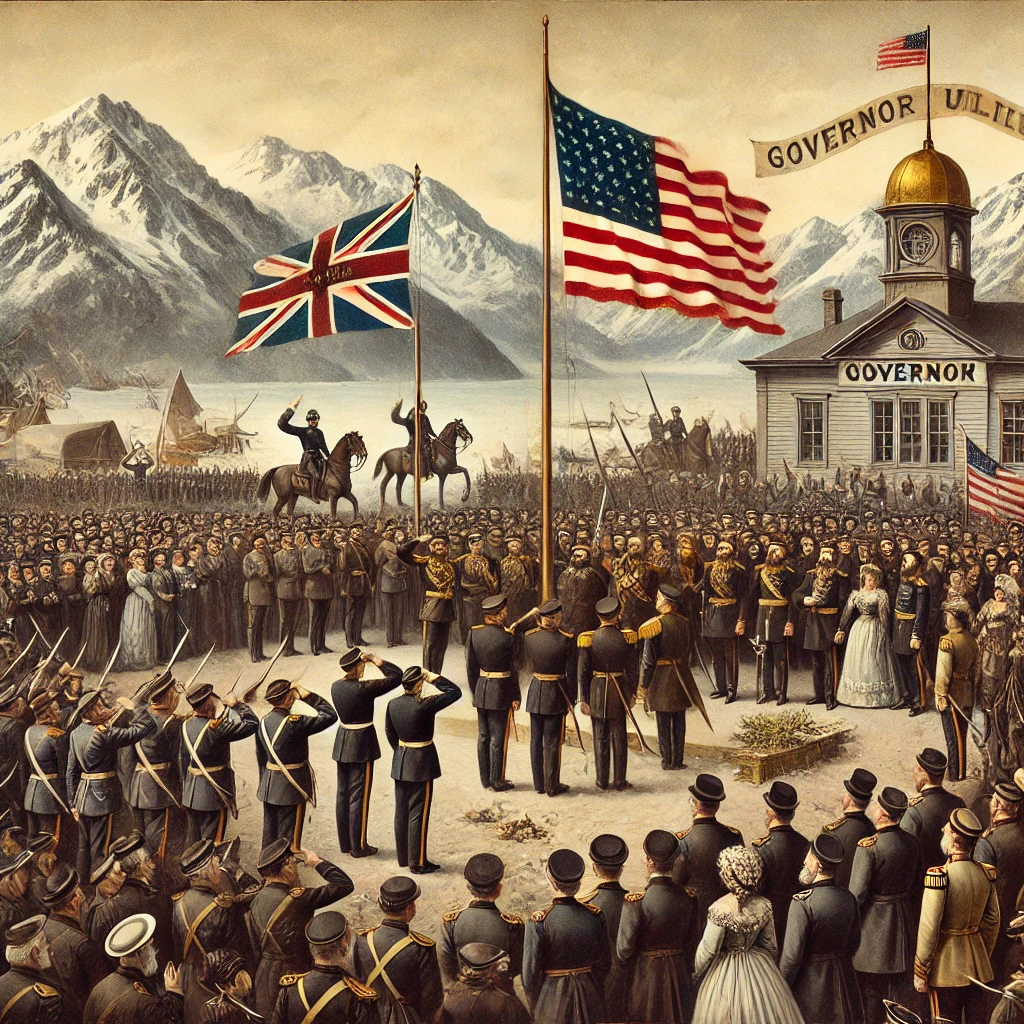On October 18, 1867, the United States formally took possession of Alaska from Russia in a significant geopolitical move that would shape the future of North America. Known as the Alaska Purchase, this acquisition added approximately 586,000 square miles of territory to the U.S., dramatically expanding its borders and resources. While the transaction was initially met with skepticism, it ultimately proved to be a transformative event in American history.

The Context of the Purchase
The roots of the Alaska Purchase can be traced back to Russia’s declining influence in North America during the 19th century. As the Russian Empire faced economic difficulties and concerns about the vulnerability of its North American territory, officials recognized the challenge of defending Alaska from potential British aggression, especially with the growing presence of the British Empire in neighboring Canada. Additionally, the costs associated with maintaining the territory became a burden, leading Russian leaders to consider selling Alaska.
In this context, the U.S. Secretary of State, William H. Seward, emerged as a key advocate for the acquisition. Seward believed that acquiring Alaska would bolster American interests and manifest the nation’s spirit of expansion, often referred to as Manifest Destiny. His efforts culminated in negotiations with Russian envoy Eduard de Stoeckl, leading to an agreement to purchase Alaska for $7.2 million, or about two cents per acre.

The Formal Transfer
The formal transfer of Alaska occurred on October 18, 1867, in a ceremony held in Sitka, the former capital of Russian America. American officials, led by Governor of the Department of Alaska, Joseph L. P. C. S. McClellan, raised the U.S. flag, marking the official transition of sovereignty. The acquisition was met with mixed reactions from the American public, with some expressing enthusiasm for the new territory while others dismissed it as “Seward’s Folly” or “Seward’s Icebox,” doubting the value of such a remote and icy expanse.
Despite initial skepticism, the purchase quickly proved advantageous. Alaska was rich in natural resources, including fur, fish, timber, and later, gold and oil. The discovery of gold in the late 19th century, especially during the Klondike Gold Rush, drew thousands of prospectors and settlers to the region, further solidifying Alaska’s value as an integral part of the United States.
The Legacy of the Alaska Purchase
The acquisition of Alaska fundamentally altered the geopolitical landscape of North America and had lasting effects on U.S. domestic and foreign policy. The purchase not only expanded American territory but also strengthened the country’s position on the global stage, signaling its growing influence and ambition. Alaska’s strategic location became increasingly important during the Cold War, as its proximity to Russia offered a critical vantage point for U.S. military operations.

In the years following the purchase, Alaska’s cultural and demographic landscape evolved significantly. Indigenous peoples, Russian settlers, and new waves of immigrants contributed to a diverse community that reflects the state’s rich history. Today, Alaska is known for its stunning natural beauty, abundant wildlife, and vital economic contributions to the United States.
Conclusion
The formal acquisition of Alaska on October 18, 1867, marked a pivotal moment in American history, showcasing the complexities of expansion and geopolitical strategy. While initially met with skepticism, the purchase ultimately proved to be a wise investment that enriched the nation both economically and strategically. As we reflect on the significance of the Alaska Purchase, we recognize its enduring legacy and the transformative impact it has had on the United States. Alaska stands today not only as a symbol of American resilience and adaptability but also as a testament to the nation’s ongoing journey of exploration and growth.
